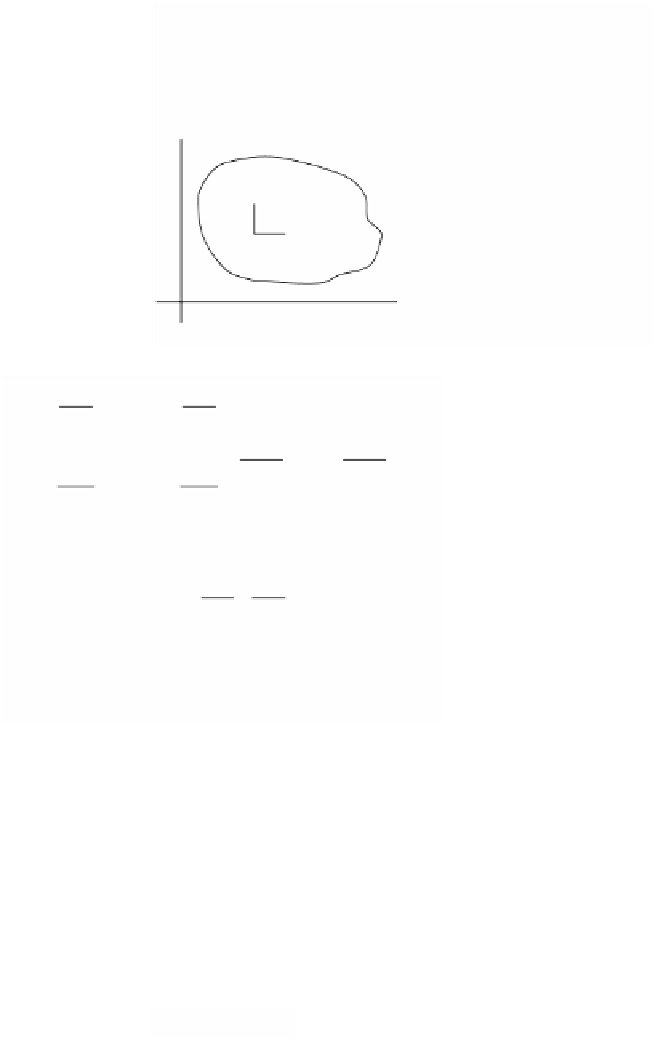Graphics Reference
In-Depth Information
Figure 9.17.
Computing the area
of a surface.
S
P
v
F
U
u
∂
∂
F
∂
∂
F
Ê
ˆ
Ê
Ê
ˆ
ˆ
Á
Á
Á
Á
Á
˜
˜
˜
˜
˜
Á
Á
Á
Á
Á
Á
Á
Á
Á
Á
˜
˜
˜
˜
˜
˜
˜
˜
˜
˜
u
u
1
1
T
T
∂
∂
F
∂
∂
F
Ê
Á
ˆ
˜
M
M
2
T
det
=
det
L
n
∂
∂
F
∂
∂
F
u
u
1
n
u
u
n
n
Ë
¯
Ë
Ë
¯
¯
n
n
0
Ê
ˆ
∂
∂
FF
∂
∂
Á
Á
Á
Á
˜
˜
˜
˜
∑
M
uu
=
det
i
j
M
Ë
¯
0
L
0
1
()
=
det g
ij
.
The second inequality followed from the fact that
n
is orthogonal to all the ∂F/∂u
i
and
has unit length.
Theorem 9.8.5 shows explicitly how the first fundamental form determines
another metric quantity, namely, volume. Keep in mind though that we do not yet
have a notion of the volume of a manifold, but only a notion of the volume of a para-
meterization. The next theorem shows that we are actually dealing with an invariant
of the manifold.
9.8.6. Lemma.
If F
1
and F
2
are two regular one-to-one parameterizations of an n-
dimensional manifold
M
n
in
R
n+1
that induce the same orientation on
M
, then
()
=
(
.
V
FF
1
2
Proof.
This is an easy consequence of the change of variable theorem for multiple
integrals and the fact that F
2
is a reparameterization of F
1
. We need to assume that
the parameterizations induce the same orientations in order to be able to guarantee
that the reparameterization map has a positive determinant. Otherwise, the sign of
the volumes may change.







